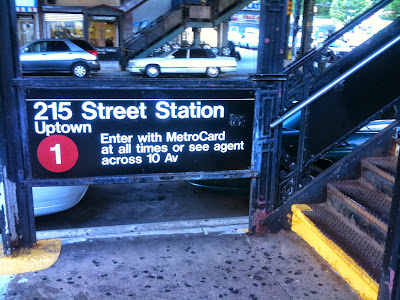 |
| image credit: statue of liberty crown |
wears a foam green
Statue of Liberty hat
"Did he just come back from the Statue of Liberty?"
"Can I trust my inductive reasoning?"
Maybe he just likes to wear plushy foam green Statue of Liberty hats.
I have never been quick to trust inductive reasoning,
so to test my hypothesis I hazard a guess to which stop he will disembark:
Long Island City, I bet! All the hotels near the 59th street bridge —
it must be it!
The N train is spit out by the East River
and diligently speeds towards its station
stop. And, JUST AS I THOUGHT, the passenger with the green foamy hat
gets off,
no smiles, his head turned downward to his mobile device,
tapping away a message to his kids, perhaps?
An inductive me postulates thus: "Hey just got back from the statue of liberty! Love, dad!"
The funny thing is,
I just got back from the Statue of Liberty, as well,
but I am not wearing a green foamy hat nor do I text anyone, at this point;
I have no doppelgangers.
I am as distant from this human being with the green foamy Statue of Liberty hat as I am distant emotionally from everyone in this car.
We are all scrunched in like sardines on the train because the Q is on hiatus. No W, either.
A haggard woman with an aquiline nose (like my aquiline grandfather), like the kind of noses that busted through Ellis Island,
tells me she never comes to Queens and the days she comes who would have thought there would be such a mess. Signaling problems, I tell her; but we don't sweat. No one sweats; The small stuff! Everyone is easily leaning on each other, following the curves of the line, anticipating the next stop
But I still think the guy with the Statue of Liberty foamy green hat looks silly —
even though, like I said, I went to the island myself today, paid the twelve bucks and licked the undersides of Lady Liberty's fanny; and I am still not so silly as to wear a silly, ridiculous hat. My silliness has already been done, lying on my back in the registry of Ellis Island pretending I was my grandfather with the aquiline nose and the legal inspector asks me a question in Italian, and I say, "Did I come to America to learn Italian?!" The legal inspector tells me that he needs to know if I am literate in my native tongue or not and I cry to my mother country to let ole liberty let me pass. When my grandfather was dying my dad bought him a six-pack of beer to drink for the night. We had to sneak it past the doctors and I wonder how many times my grandfather had to sneak past people: sneak past the inspectors in the registry, sneak past the medical examiners and the anti-immigration protesters. To sneak past, again and again, to see the face of liberty sans a green foamy hat. I was silly today. I cried in the registry. Not, long fat sobs, but the kind of cry that sheds one fat tear on your face — small enough not to be noticed but fat enough on my face to feel emotional. I get up in the registry and thank the Park Service ranger — "Thanks, for the tour!"
"Make sure you see the washrooms, sir!"
But, I think, even though I had my moment of silliness, nonetheless, that I should get a hat like that for myself, put it on my head on the way to Lex and 59th street, in the rush hour traffic; pretend like I have just come from the Statue of Liberty to look for my Holiday Inn single-room, non smoking.








_-_re-tinted_Marble_Hill_detail.png)



